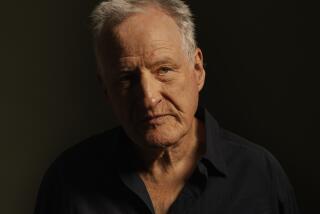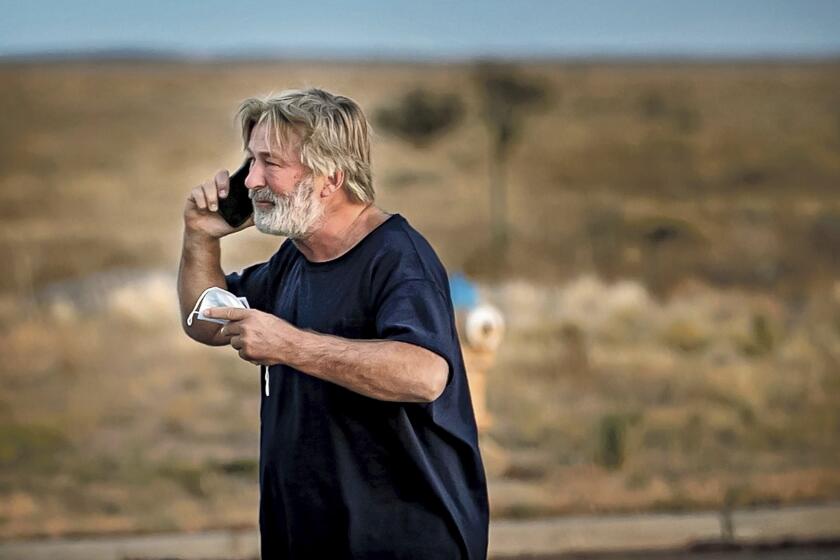Marketing the Movie Through a Minefield
It is a movie laced with powerful human emotions involving motherhood and race.
On the surface, “Losing Isaiah” tells the story of a white social worker, played by Jessica Lange, who adopts an African American child only to become locked in a fierce custody battle years later with the son’s biological mother, played by Halle Berry.
But behind the scenes, there is another story of how a major movie studio, Paramount Pictures, carefully worked to create awareness of the film while also seeking to avoid controversy.
To be sure, “Losing Isaiah” is littered with land mines: transracial adoption, drug-addicted mothers, abandonment of babies, the rights of biological parents vs. adoptive parents, the rights of children and the tensions underlying black and white America.
“When you have a film like this, with this kind of controversy, you could really anger people if you just throw it out there,” said a source close to the project. “We wanted to be sure it was slowly integrated into the community.”
To that end, the studio mounted a nationwide campaign to generate debate about the movie while also allowing preview audiences to digest the film’s story and argue over its content.
The studio screened the R-rated movie before a wide array of target groups, ranging from transracial adoptees and parents alike, to African American opinion-makers, local and national politicians, to those working in the adoption field.
In terms of sheer public awareness, Paramount thinks it has succeeded, at least among female audiences.
Earlier this week, Paramount officials said, tracking polls showed that 7 1/2 out of 10 women in America were aware of the movie, with real interest in seeing it expressed by 4 out of 10 women. Nine out of 10 African American women were found to be aware of the film and 25% said it would be their first choice as one to see this weekend.
But even the filmmakers concede that “Losing Isaiah” may not be everyone’s cup of tea.
It deals with adoptive parents’ recurring nightmare: the unexpected appearance of a biological parent demanding custody of their child.
And, it initially depicts Berry’s character, Khaila Richards, as a crack-addicted ghetto mother--a stereotype some say is reflected too often in the media.
Another possibly troubling element is the seeming indifference that Lange’s character, Margaret Lewin, displays to her adoptive child’s African American cultural heritage and the suggestion that blacks alone can best impart this heritage.
The movie, produced by Howard W. Koch Jr. and Naomi Foner, has received positive buzz in the film industry, particularly for the strong performances turned in by Lange and Berry. The film is directed by Stephen Gyllenhaal from a screenplay by Foner, his wife. It is based on a novel by Seth Margolis.
From the beginning, Koch said, the filmmakers wanted to make a powerful movie and that the central issues quickly crystallized around two questions: “Who’s to say who is a mother?” and “Should a white person raise a black child?”
Paramount Pictures chairman Sherry Lansing, who as a producer made two issue-oriented films that ignited nationwide controversy--”Fatal Attraction” and “Indecent Proposal”--greenlighted the “Losing Isaiah” script on its first draft.
After filming in Chicago was completed, the real test for Paramount was deciding how to get blacks and whites behind a film that even Gyllenhaal conceded “gets emotions boiling.”
To that end, Paramount enlisted its field agents in major cities to invite various opinion-makers, civil rights officials and people involved in adoptions to see the movie at preview screenings, then stay with them to answer questions.
The groups included the NAACP Legal Defense Fund, local adoption agencies, the Rainbow Coalition, the Black Women’s Forum in Los Angeles, Catholic Charities, various children’s counseling centers and attorneys who handle adoptions. One key group was the National Assn. of Black Social Workers, which has opposed transracial adoptions as “cultural genocide” for black children.
In Washington, where a bill has been introduced in Congress that would make it illegal to consider race when placing children with prospective families, politicians also were invited to see “Losing Isaiah.”
Gyllenhaal said audiences are often divided on which mother to support. “Some people love Jessica and hate Halle (in the film),” he said, “while some hate Jessica and love Halle.”
Foner, meanwhile, said that some African Americans feel Berry’s character shouldn’t get the child back because she abandoned her baby while in a drug-induced haze and needs to take responsibility for her actions.
Foner added that the film has “largely been embraced by blacks we’ve shown it to.”
The screenwriter recalled how one African American man stood up after a screening and asked other African Americans in the audience: “When was the last time you saw an African American crack-addicted infant that was the prize? That’s what we’ve been fighting for.”
Leora Neal, executive director of the National Assn. of Black Social Workers in New York City, praised the film’s ending but said “Losing Isaiah” at times conveyed “false information” by seeming to indicate that there aren’t enough black parents in society capable of adopting black children.
“It’s a stereotype,” she said. “Black families are on waiting lists for three or four years.”
David Watts, a 28-year-old social worker in Brooklyn, and a child of mixed parents who was adopted into a white family, said he was disappointed that the movie dealt only with how transracial adoption affects a 3-year-old.
“All the stories that come out on transracial adoptions deal with kids when they are kids--2, 3 or 4 years old,” Watts said. “If you ask a kid at that age if you want to stay with Mommy and Daddy, they’ll always want to stay there.”
Elly Maran, a white psychotherapist from New York City who adopted two mixed-race children in the 1960s, said: “I felt it was a shame the movie ended with the child being 3 years old because the adoption and racial issues emerge much more poignantly as family life goes on and as the child gets older.”
Mary Beth Style, an official at the Washington, D.C.-based National Council for Adoption, an advocacy group, said she hopes the film does not scare parents away from adopting. “Once the adoption has occurred, they should feel safe.”
She said that an adoptive parent being forced to return a child to his or her biological parent--the Lange character’s greatest fear--occurs only in “a fraction of a percent” of cases.
While screenings were under way, Paramount was also developing its ad campaign. Movie trailers and TV spots avoided making the Lange-Berry custody battle too painful for parents or children to watch.
Arthur Cohen, Paramount’s president of marketing, said: “We knew people would not accept the information if it seemed too personal a threat to their world. So, we chose to place it as much as we could in and around the courtroom.”
The print ad, meanwhile, shows Lange holding a black baby to her breast while Berry’s face is looming in the background. The caption reads: “Who decides what makes a mother?”
“The worst thing you can do when you see a movie as a marketing executive is to know you have to trick it,” Cohen said. “That wasn’t the case with this movie. It’s a quality movie. The issue was, how many people could you involve in your subject matter?”
More to Read
Only good movies
Get the Indie Focus newsletter, Mark Olsen's weekly guide to the world of cinema.
You may occasionally receive promotional content from the Los Angeles Times.






